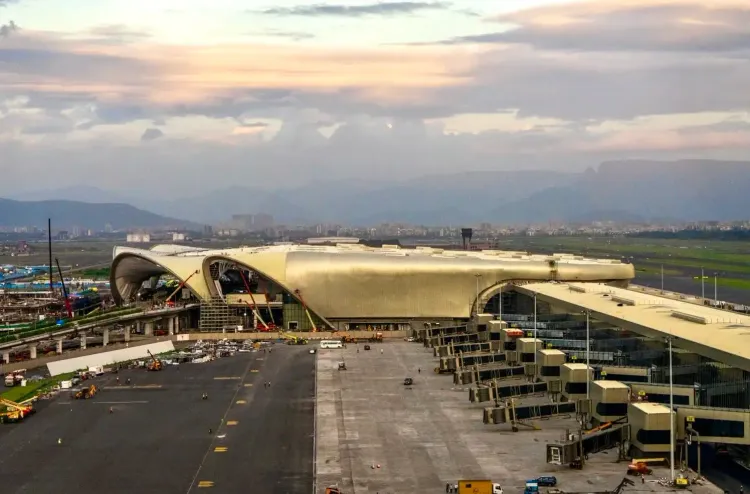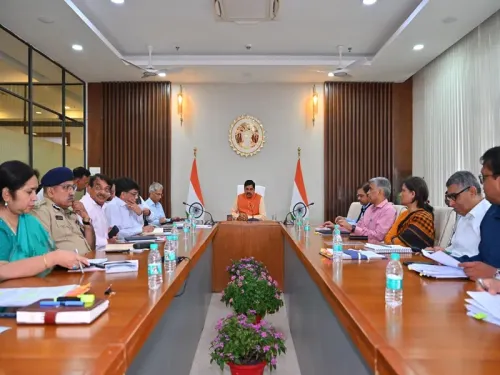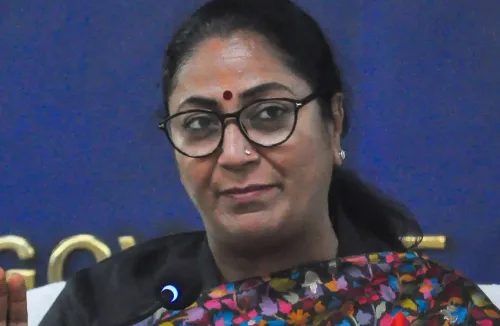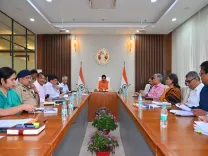Is the Indian Government Really Doubling the Number of Airports to 350 by 2047?

Synopsis
Key Takeaways
- India aims to expand airports from 163 to 350 by 2047.
- Passenger traffic expected to exceed one billion.
- 25 million jobs projected in the aviation sector by 2047.
- UDAN scheme enhances regional connectivity.
- Domestic passenger traffic has grown 10-12% annually.
New Delhi, Oct 23 (NationPress) The civil aviation industry in India has rapidly developed, positioning the nation as the third-largest domestic aviation market globally.
The quantity of airports has surged from 74 in 2014 to a projected 163 by 2025.
As India approaches its centenary of independence, the government is pursuing an ambitious trajectory for the aviation sector, aiming to increase the number of airports from 163 in 2025 to more than 350 by 2047. Passenger traffic is anticipated to surpass one billion, based on an official announcement made on Thursday.
With an expected creation of 25 million jobs by 2047 and growing opportunities in MRO, drone manufacturing, and pilot training, aviation is poised to become a crucial pillar of India’s $10 trillion economy, according to the statement.
The UDAN (Ude Desh ka Aam Nagrik) initiative, launched in October 2016, has now marked nine years of success, revolutionizing regional connectivity with 3.23 lakh flights transporting 1.56 crore passengers to smaller airports.
UDAN has operationalized 649 routes and connected 93 aerodromes (including 2 water aerodromes and 15 heliports) across the nation, with 12 airports/heliports located in the North-East region. It has also integrated the Andaman, Nicobar, and Lakshadweep Islands into the national aviation framework.
As per the International Civil Aviation Organisation (ICAO), investments in aviation create a strong ripple effect on the economy. For every rupee invested, the sector generates over three times that amount in economic activity and supports more than six times as many jobs in related industries.
Currently, the aviation sector supports over 7.7 million jobs indirectly and 369,000 jobs directly. The demand for skilled professionals—pilots, engineers, ground staff, and logistics experts—is expected to increase significantly.
With over 116 bilateral Air Service Agreements, India is enhancing global connectivity as Indian airlines expand internationally, solidifying the country’s role as an aviation hub in Asia. Civil aviation is also bolstering FDI inflows, technology transfer, and Make in India initiatives in aircraft manufacturing, ground handling, and Maintenance, Repair, and Operations (MRO) services.
In the last decade, domestic air passenger traffic has increased by 10-12 percent annually. By 2040, it is expected to grow sixfold to approximately 1.1 billion passengers.
India’s commercial airline fleet is projected to expand from 400 aircraft in 2014 to around 2,359 aircraft by March 2040. The total employment generated by the aviation sector in 2040 is anticipated to reach around 25 million, establishing itself as a key driver in India's journey towards becoming a developed economy.
NITI Aayog reports that domestic travelers constituted over 83 percent of total tourism expenditure in 2019, a figure expected to rise to nearly 89 percent by 2028. This trend demonstrates how government initiatives like UDAN have successfully closed the infrastructure gap, making air travel accessible for millions and connecting remote areas, thus making it both affordable and inclusive.
This transformation has also altered India’s travel landscape. Previously isolated destinations—Kullu, Darbhanga, Hubballi, and Shillong—are now linked by air, stimulating local economies and regional tourism, the statement concluded.









